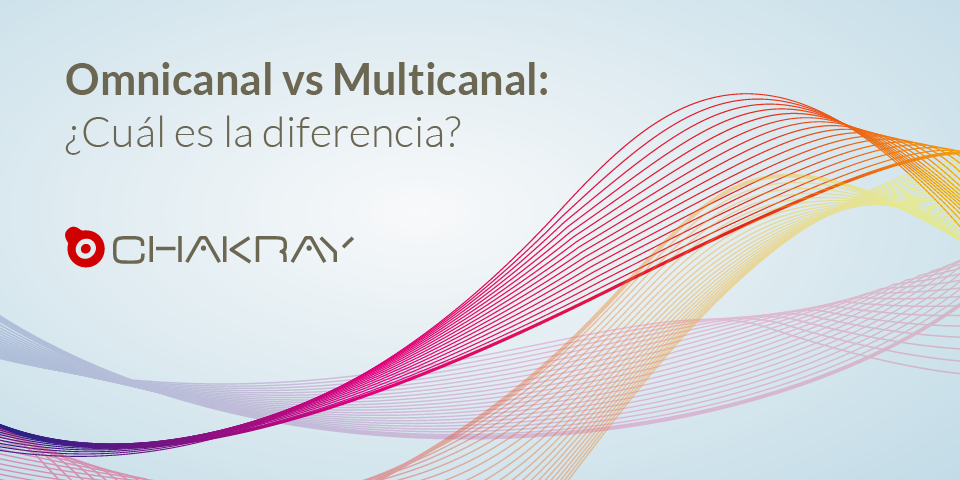Even though they are similar, widespread terms, it is important to clearly define the differences that exist between the terms multichannel and omnichannel. In a multichannel solution, the client faces a fragmented purchasing experience, with a number of ‘cuts’ when going from one channel to another. On the other hand, omnichannel offers a completely different experience. In this situation, the client relates naturally through the various channels the company has, at any time of day, and any day of the week. Mobile payment or contact centres coexist in a perfectly integrated manner with the physical store or the brand’s website.
“In a multichannel solution, the user experiences ‘cuts’ between different channels, while in omnichannel he relates to the brand in a manner which is uninterrupted.”
Omnichannel is the result of a shift in corporate mentality
The advent of new technologies in commerce has resulted in a race by companies unwilling to lag behind to incorporate the new channels that emerged. Traditional channels, such as the physical store or the phone, were joined by the creation of websites with increasing improvements, and those were followed by the onset of social networking and smartphone applications. It is common to find brands that use each of these media, but who do so in a manner in which each one is independent from the other.
The omnichannel strategy combines all of those channels so that the purchasing experience, which is the cornerstone around which business revolves, benefits from a maximum level of coherence and fluidity. If the client does not perceive any interruption between the channels he uses on his day to day, why should the brand?
“Omnichannel seeks a unity among the various channels with which a company works.”
Omnichannel seeks a unity among the various channels with which a company works. Having various platforms client can contact is not enough; the various channels should act in an integrated, coherent manner.
-Discover 5 examples of omnichannel strategies in companies that have improved their marketing-
The shopping experience as the target of omnichannel
Omnichannel is the result of consumers’ demand for a better communication and a greater service offer to satisfy their needs. Understanding what omnichannel comprises is as easy as taking a look at customers’ new way of shopping.
Nowadays, consumers use all media available at their disposal (both physical and virtual) indistinctly and uninterruptedly. They also do so at any time of the day and by any channel at their disposal (web, social networks, apps, physical store, etc.).
Therefore, what omnichannel does is offering an integrated shopping experience to satisfy the client. In other words, omnichannel’s main feature is having a unified message on every one of their sales channels, while multichannel addresses clients through different channels in a distinct manner on each of them.
Different technical requirements
Developing an omnichannel strategy implies setting in motion a technological infrastructure that is not required by the multichannel strategy. Why? Because the former should integrate all channels over which the company communicates with the buyer. That implies a common customer database so that, for example, a client’s inquiry via Facebook about a product that he saw on the company’s app is properly answered. Or so that the physical store’s stock is 100% synchronised with the one on the virtual store contained within the website.
Furthermore, the platform employed should allow for a progressive incorporation of the various channels that occasionally emerge as fast as possible. On the other hand, it is paramount to measure the full purchasing process, whether via a control panel or other systems.
Unlike the multichannel strategy, the omnichannel strategy understands a purchase as a process where various channels are involved. Being capable of understanding what it is that has led each buyer to each product is key to offer him a satisfactory shopping experience next time around.
Omnichannel strategy examples
The best way to understand the differences between an omnichannel strategy and a multichannel one is by using examples. One of them is Kia. This automotive company set in motion an omnichannel marketing strategy back in 2003 with the goal of integrating all communication channels to generate a single response for the client, so that the brand’s positioning in the Spanish market would be strengthened.
With this in mind, they brought together the various customer contact channels such as e-mail, customer support phone, fax, e-mail address and sms services. In this manner, they aimed to centralise customer data, increase the re-purchase rate and influencer marketing along the various stages of customer engagement and improve the rate of purchases vs. leads by qualifying records.
In addition to these measures to centralise communication, others were taken online over social networks (Facebook, YouTube and Twitter), and they also created a direct chat on the website. With this multichannel strategy, Kia became one of the pioneering companies in Spain when facilitating consumer communication through various channels, both on and offline.
Setting in motion a new IT infrastructure does not necessarily have to be a costly road, but a good coordination among the various departments in the company will definitely help.
As opposed to the multichannel strategy, omnichannel requires the commitment of all employees –not only of those who are in direct contact with customers. Additionally, middle management and executives must understand that the brand’s message should be coherent and perceived as such.







